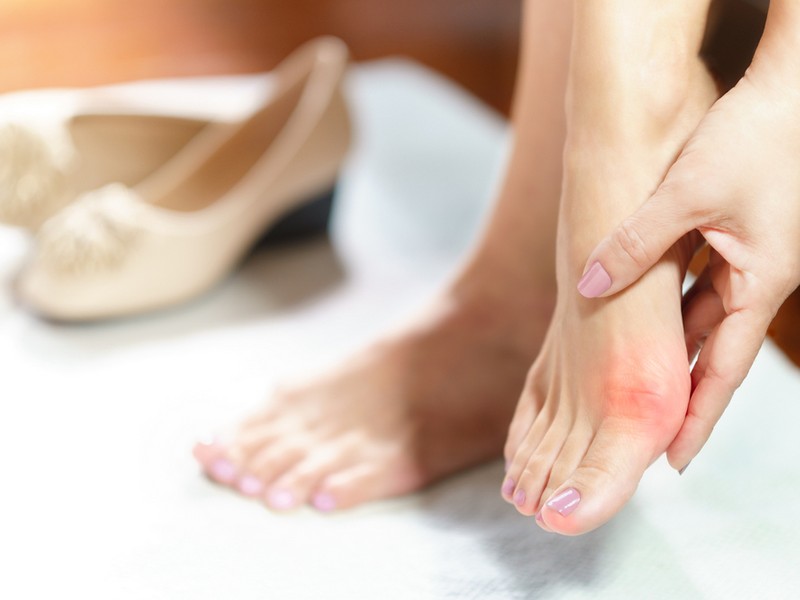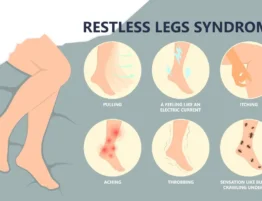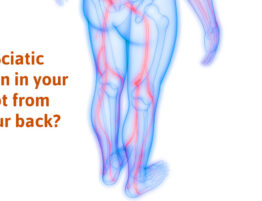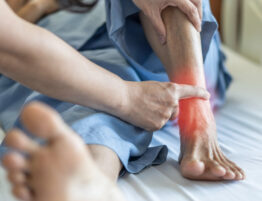
What Are Bunions?
You have all seen a person wearing beautiful sandals, but notice a big bump or protrusion on the side of their foot by the big toe. Or maybe you’ve seen an area of the shoe by the big toe that is being pushed out- looking as though it wants to bust through. This is a bunion.
 There are several hereditary factors that can cause bunions; and the most popular opinion is that shoes aggravate it. Bunions become a big issue when they start to cause skin irritation, redness and swelling, so it’s fair to look into bunion treatment options before things get bad.
There are several hereditary factors that can cause bunions; and the most popular opinion is that shoes aggravate it. Bunions become a big issue when they start to cause skin irritation, redness and swelling, so it’s fair to look into bunion treatment options before things get bad.
Why Do We Get Bunions?
There are varied factors that lead to the formation of bunions. As foot specialists, we believe that in most cases shoes can aggravate the problem, but are not usually the main cause. In fact, the foot type you’ve inherited has a lot to do with creating the bunion.
The first metatarsal (the bone that leads down to the great toe joint) needs to be very stable. Many people tend to over-flatten their feet in their arch, causing instability of the first metatarsal. This results in an abnormal pulling of the tendons which causes the big metatarsal to move away from the others, thus creating the bunion bump. To simplify, the bump is caused by the misalignment of the first metatarsal and the second metatarsal.
There are other bunion formation theories that involve the shape of the tarsal bones (these are the small cube-shaped bones in your arch). Some believe that the different shapes of these bones associated with your first metatarsal leads to more instability, and therefore can create the bunion deformity angle.
Treatment:
There are various bunion treatments that can be attempted, such as padding, wearing different shoes, custom-made orthotics or cortisone injections. Oftentimes these can help, especially if the bunion is at an earlier stage, but in many cases these options are only a temporary fix.
It is important to know that as time goes on and the deformity of the bunion gets worse, people can even develop an arthritic condition in the great toe joint.
For many patients, surgery is the most popular bunion treatment option because it is considered a permanent correction. We discuss this very carefully with patients because it can lead to risks such as recurrence, infection, nerve injury, or slow/delayed bone healing.
The Most Popular Surgical Options:
There are different approaches taken to correct a bunion surgically – the simplest being what is called the Silver bunionectomy (also known as the McBride bunionectomy). This involves shaving off the extra bone on the inside of the big toe. Another common procedure is the Austin Bunionectomy, where the bone by the big toe joint is pricesely shifted over towards the second bone; therefore reducing the angle between the two bones.
Depending on the severity of the deformity, other bunion treatment options may take precedence – such as the removal of a wedge of bone towards the arch. This is reserved for more severe deformities and will also close the angle down to bring the first metatarsal closer to the second metatarsal.
At Anderson Podiatry Center, we believe we have perfected these techniques to give our patients the maximum correction, so they can get back to normal activity in their shoe gear. For most patients, it takes six to eight weeks to achieve this. If you’ve started noticing difficulty in wearing shoes, and are therefore limiting your shoe selection, please book an appointment to discuss treatment options. A consultation with us can go a long way; let us help you get back to pain-free activities.









Write a comment: